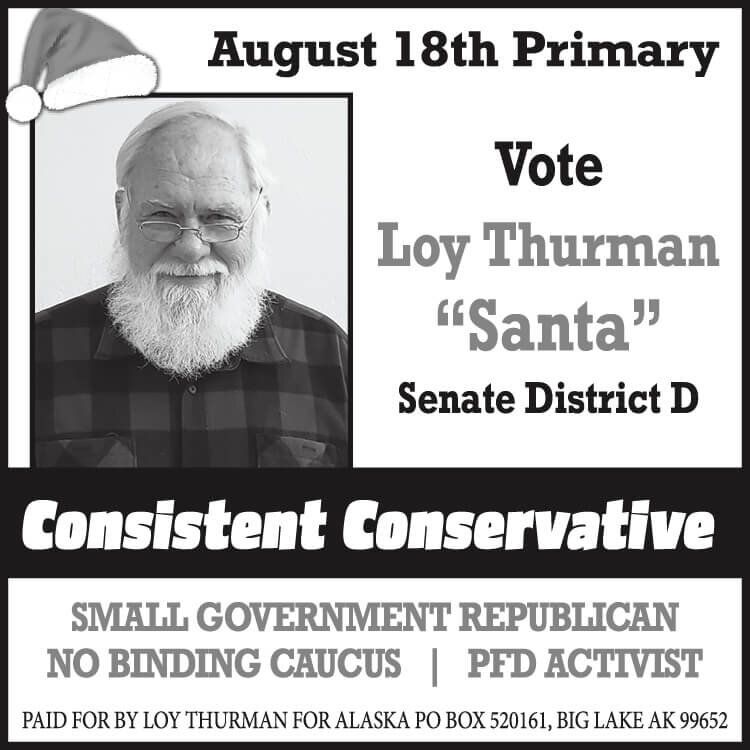Contributed by Senator Mike Dunleavy
Senator Mike Dunleavy (R-Mat-Su & Copper River valleys) recently released a blue print for Alaska to achieve a sustainable budget within four years. This approach uses a multi-year proposal that utilizes budget reductions totaling $1.1 billion over four years. The plan requires no new taxes.
Sen. Dunleavy’s approach uses a blend of general fund savings and a more modest earnings reserve account draw only after dividends are calculated and paid in full to Alaskans.
“This fiscal situation we find ourselves in needs to be solved this year,” Sen. Dunleavy said. “We are running out of time and resources to make it happen. In doing so, all Alaskans need to pull together and make sacrifices to get us through this difficult transition. Taxing Alaskans, and/or taking the PFD to cover the large fiscal gap is not necessary. Substantial reductions, however, are needed so existing resources currently at our disposal can be deployed to get us on a path to a sustainable budget.”
Under this approach, the PFD and its calculations remain intact.
Sen. Dunleavy further stated, “Our economy is in recession and we have the highest unemployment rate in the nation. Now is not the time to ask the private sector to give more to government when Alaskans are out of work and businesses are on the ropes.”
The cornerstone of the approach is a revised constitutional appropriation limit to curb the growth of government which if passed by the legislature, would go before the voters in the next general election for approval.
“I look forward to the input of my colleagues and other stakeholders,” Sen. Dunleavy said. “Hopefully other approaches will also come forth, allowing us to work collaboratively on a solution for all of Alaska.”
This approach is comprised of the following:
• Senator Dunleavy’s approach includes no new taxes. No income tax, no state sales tax, no broad-based taxes. No new taxes are required.
• Use of existing savings to help bridge to a sustainable budget within four years.
• A Revised Constitutional Appropriation Limit: The central element of Senator Dunleavy’s plan is repairing our existing constitutional appropriations limit that is meant to cap the size and growth of government. This is needed in order to guarantee fiscal restraint and protect against future runaway spending. The measure would be presented to the voters in the next general election (November 2018).
• A Revised Statutory Appropriation Limit: Largely mirroring its constitutional cousin by enacting this statute, elements of the plan would be put into practice beginning this year.
• Making reasonable spending reductions over four years totaling $1.1 billion.
$300 million each year for FY18, FY19 and FY20 (or 7% per year)
$200 million in reductions in FY21 (or 4.6%)
• Protecting the PFD & Using the Earnings Reserve Account (ERA): 50% of the utilized amount goes first for payment of the dividend, then 50% for essential state services. The Alaska Permanent Fund Corporation has provided data showing that the PFD transfer amount and the ERA both grow over ten years using this approach.
• A Biennial Budget: Instead of adopting an annual budget, Alaska would transition to a biennial budget process. As of 2010, nineteen states utilize this more efficient approach.
• Statutory changes to foster true collaboration on the creation of the budget between the legislature and the governor: A committee chosen by both bodies of the legislature would work together with the governor during the interim to build a budget from the ground-up, earlier in the year. This approach improves the existing process, which condenses a deep dive into the state’s finances to the constraints of the busy 90-day legislative session.
















































